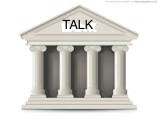| TalkBank | 
| Access Levels |
Researchers can ask their subjects to approve or disapprove of a variety of options or levels for data access. However, only options 2, 4, 7, & 11 are permitted for PsychosisBank data
- No restrictions placed. This level allows access over the web to both transcripts and media without pseudonymization.
- Pseudonymization of last names and addresses. Participant's last names and information regarding addresses or locations will be replaced by pseudonyms in the transcripts. This preserves the bulk of the interaction and requires only a bit of work to replace a few words.
- Fuller pseudonymization. In addition to basic pseudonymization, we can also pseudonymize first names. Because first names cannot uniquely identify an individual, this is usually not important in terms of maintaining privacy. However, it may be required in some cases.
- Audio bleeping. In addition to pseudonymization, participants can request either partial or full audio bleeping of pseudonyms.
- Video blurring. In some cases, video blurring may be requested. Blurring is technically quite difficult to implement and highly disruptive of the data. Therefore, it is usually better to protect sensitive video data using other methods such as passwords, described below. Currently, there are no TalkBank datasets that use video blurring.
- General password protection. Access to data may be restricted to certain individuals or groups of individuals. Currently, most of the clinical databanks use a general password given out to all qualified researchers.
- Restricted password protection. In some cases, the contributor of data may wish to control access to data themselves. In these cases, we create a password, but it is up to the contributor to decide who could know that password.
- Embargo. If contributors need to publish results before allowing access to their data, we can enter data into the database, but provide no public access until the embargo period is over.
- Non-disclosure form. For cases requiring extreme protection, password protection can be accompanied by signing of a non-disclosure form. This form prohibits the publication of any reference that identifies individuals. No copying of the data is allowed. No TalkBank data are subject to this restriction.
- Controlled viewing. This level of access requires that data can only be viewed in controlled conditions under direct on-line supervision. This level may be needed for data of a highly personal or revealing nature.
- Archiving only: These data would not be viewable over the web, but would be archived in the format of the general system for offline use. This level allows the investigator to use the tools of the analysis system without actually adding the data to the online database.
Some of these options can be combined. For example, options 2, 4 and 6 could be combined. However, one might think that invocation of option 6 would make options 2 and 4 irrelevant in terms of protection of privacy. Options 5 and 9 could theoretically be combined, but one would wonder why anyone would go to the work of video blurring if the data were not being made viewable.
None of these options specify a time at which the data will be destroyed. There are no plans for data destruction for TalkBank data.